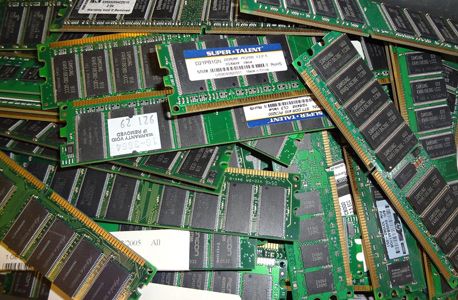Page 8222
Dec 31, 2018
New Beetle Species Named After ‘Game of Thrones’ Dragons
Posted by Genevieve Klien in category: entertainment
The fate of Westeros will soon be revealed.
In the meantime, entomologist Brett Ratcliffe has found three new contenders for the throne.
The University of Nebraska professor named three of his eight newest beetle discoveries after a trio of dragons in George R. Martin’s “A Song of Ice and Fire” book series (known more popularly as HBO’s Game of Thrones).
Continue reading “New Beetle Species Named After ‘Game of Thrones’ Dragons” »
Dec 31, 2018
Five Trends Set to Impact the Chip Industry in 2019
Posted by Genevieve Klien in categories: internet, robotics/AI
From autonomous things, to edge computing, and 5G, these five trends are expected to have a deep impact on the semiconductor sector in the year ahead.
Rahmat Triyono, the head of the tsunami and earthquake division at the BMKG, said the quake had been felt strongly in Bengkulu city, Kepahiang and Central Bengkulu.
“Based on our modelling, the earthquake does not have the potential to cause a tsunami,” he said in a statement.
There were no reports of casualties or damage at the time of writing. (kmt)
Dec 31, 2018
The under-the-radar Google company chasing immortality
Posted by Montie Adkins in category: life extension
Calico will be conducting research until 2022, when it will enter “Phase 2a studies” — or as experts have hinted, human testing — and finally the “late-stage development activities.”
By The Telegraph 3 days…
Dec 31, 2018
2019 China tech look ahead: trade war likely to cast a shadow as AI, e-commerce, smartphone progress continues
Posted by Derick Lee in categories: economics, mobile phones, robotics/AI
While a 90-day ceasefire period is in place for negotiators to end the war, major Chinese technology companies and national initiatives are expected to continue to face challenges in 2019 as the world’s two largest economies remain at loggerheads over global leadership in hi-tech innovation.
Here we take a look at the views of analysts, executives, and experts to see which sectors and companies will likely be in the spotlight in 2019 and what the big issues are expected to be.

Dec 31, 2018
NASA spaceship zooms toward farthest world ever photographed
Posted by Michael Lance in categories: government, space travel
Despite government shutdown?
A NASA spaceship is zooming toward the farthest, and quite possibly the oldest, cosmic body ever photographed by humankind, a tiny, distant world called Ultima Thule some 6.4 billion kilometers away. Current latest trending Philippine headlines on science, technology breakthroughs, hardware devices, geeks, gaming, web/desktop applications, mobile apps, social media buzz and gadget reviews.
Dec 31, 2018
Our New Horizons spacecraft is making its final approach to #UltimaThule, an icy object located ~1 billion miles past Pluto!
Posted by Michael Lance in category: space
Our New Horizons spacecraft is making its final approach to #UltimaThule, an icy object located ~1 billion miles past Pluto! Get the latest updates and find out where and when to watch the most distant planetary flyby ever this #NewYearsEve : http://pluto.jhuapl.edu/
#UltimaThule is an icy rock located ~1 billion miles past Pluto in the Kuiper Belt. On #NewYearsEve, our New Horizons spacecraft will fly within 2,220 miles of this object, providing the first close-up look at such a pristine building block of the solar system. Get the latest update:
Dec 30, 2018
Singularity Hub’s Top Articles of the Year
Posted by Mike Ruban in categories: 3D printing, habitats, robotics/AI
As 2018 draws to a close and we start anticipating the developments that will happen in 2019, here’s a look back at our ten most-read articles of the year.
This 3D Printed House Goes Up in a Day for Under $10,000 Vanessa Bates Ramirez | 3/18/18 “ICON and New Story’s vision is one of 3D printed houses acting as a safe, affordable housing alternative for people in need. New Story has already built over 800 homes in Haiti, El Salvador, Bolivia, and Mexico, partnering with the communities they serve to hire local labor and purchase local materials rather than shipping everything in from abroad.”
Machines Teaching Each Other Could Be the Biggest Exponential Trend in AI Aaron Frank | 1/21/18 “Data is the fuel of machine learning, but even for machines, some data is hard to get—it may be risky, slow, rare, or expensive. In those cases, machines can share experiences or create synthetic experiences for each other to augment or replace data. It turns out that this is not a minor effect, it actually is self-amplifying, and therefore exponential.”


















